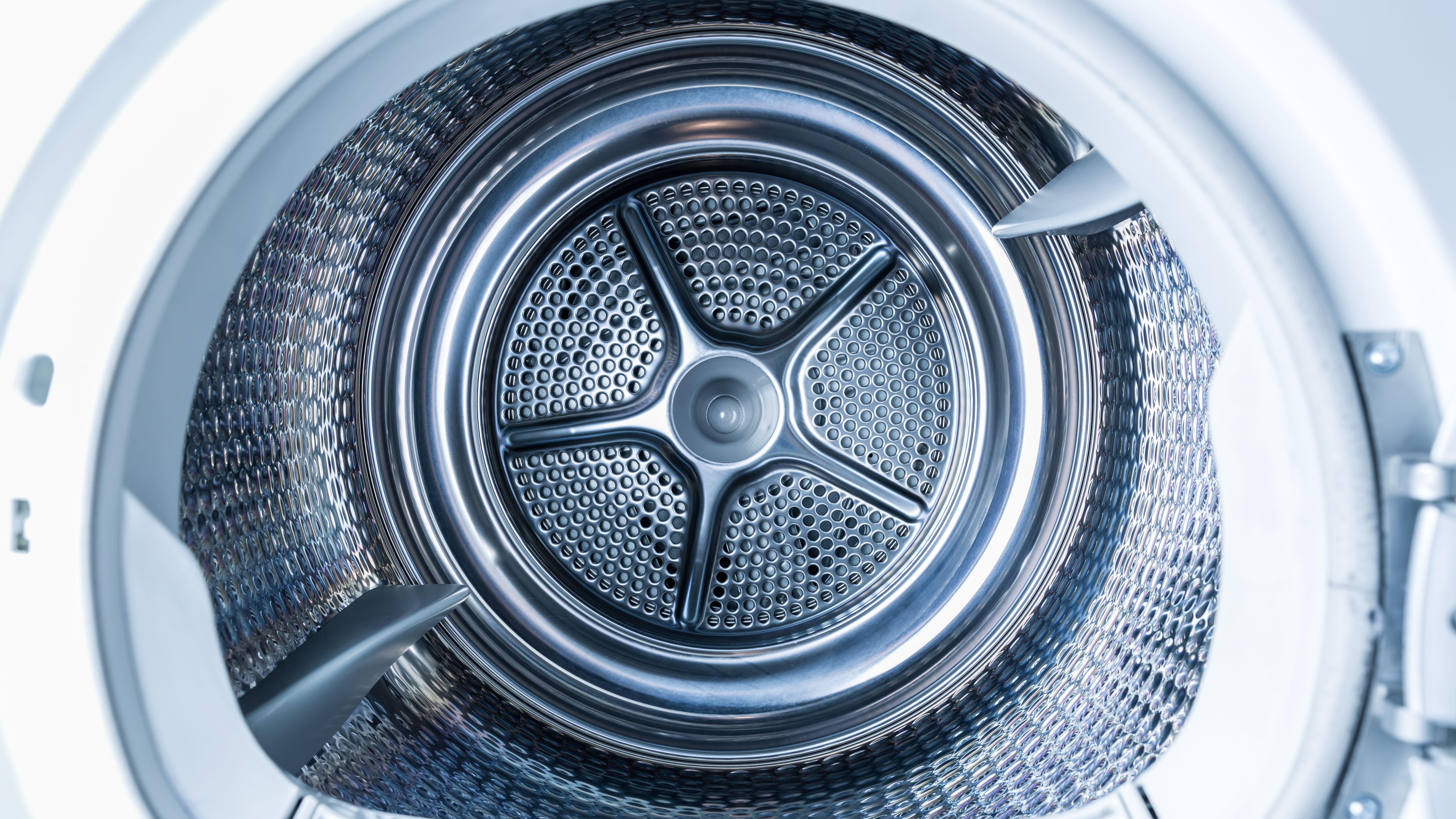
When it’s too cold and wet to dry laundry outside, a tumble dryer is your best friend. But with three different types available, how does a dryer actually work?
The best dryers can be vented, condensing, or work via a heat pump. Each type has advantages, so we asked heated laundry expert Gwilym Snook from AO.com to explain a bit more about the differences between them.
And before you dry, if you want to get the best clean from your washing machine, check out our handy guide to the best front load washers to find the right model for you.
3 of the best dryers to buy in 2024
Sturdy and well-engineered, the GE GFD55ESSNWW's big capacity means it can deal with anything from bedsheets to towels and can handle large loads of laundry, so you can dry more clothes in fewer cycles.
This modern dryer also comes with plenty of features like a Wi-Fi connection, which means you can pair it with your phone and receive updates about your cycle from anywhere you are. This remote control also means you can start, stop, and pause your cycle from your phone.
The Samsung DV45K6500GV is our top choice of gas dryers. It’s got 14 cycles, four of which are steam-enabled and can sanitize or de-wrinkle your laundry. This dryer also pairs with Samsung’s SmartThings app, allowing you to monitor your laundry remotely and even control it.
Gas dryers typically cost less in energy usage than their electric counterparts, and on top of this, the Samsung DV45K6500GV is ADA-compliant and Energy Star-certified. It’s got a large 7.5 cubic foot capacity that can tackle king-size comforters or hefty loads of washing in one go.
The Whirlpool WED4950HW is an affordable top-loading electric dryer with a 7 cubic foot capacity. It’s roomy enough to handle large loads and bulky items like towels and jeans, and the wide hamper door makes it easy to get clothes in and out of a wash basket.
It features Whirpool’s trademark “AutoDry” drying system, which can sense when your clothes have reached the optimum moisture level and stop the cycle to prevent them from crisping up.
Condensing tumble dryers
A condensing tumble dryer extracts moisture from your laundry before draining it away as condensed water. They're generally on the less expensive end of the spectrum, so they might be a good choice if you have a smaller budget to stick to.
We spoke to Gwylim Snook from AO.com, who said: “If your budget is lower, then a condenser may be best. If you have a larger budget but are looking to save money on energy bills, a heat pump model will be the most efficient.”
“It circulates air within the drum, and this air heats up as it is circulated through the laundry,” says Gwylim. “The hot air picks up any moisture, then passes through the condenser coil and stores it in a removable tank, which you then empty.”
Gwylim advises the benefit of a condensing tumble dryer is that it can be placed in any room of the home as it doesn’t need venting pipes to be installed. “Condensing tumble dryers do tend to cost more than venting tumble dryers, but are more energy efficient,” he says.
Vented tumble dryers
A vented tumble dryer draws air from the room it’s in and heats it. “This warm air is then circulated throughout the drum, causing moisture in the laundry to evaporate,” explains Gwylim. “The warm air from the drum is then vented (blown) outside as steam.”

Venting tumble dryers cost less than condensers, but you will need to install venting pipes leading to the outside of your home or put a flexible venting tube through an open window whenever the dryer is in use. “Another benefit is that as all the moisture in a vented tumble dryer is taken outside, there’s no water reservoir that will need emptying,” adds Gwylim.
Heat pump tumble dryers
In a heat pump model, hot air is sent into the drum, and the warm vapor is then compressed and passed through a piece of equipment called an evaporator. “The water is then extracted into a water tank (similar to that found in a condenser model) or straight into the drain,” says Gwylim. “The main difference with a heat-pump model is that the warmth from the air is recycled, rather than being pumped outside via a vent.”
He explains that drying cycle times are longer with a heat pump and that these dryers are more expensive than other types. “However, because heat-pump models reuse the hot air, they are the most energy-efficient dryers in the market,” reveals Gwylim. “They’re also much quieter and more gentle on your clothes due to the lower temperatures required to run the appliance.”







